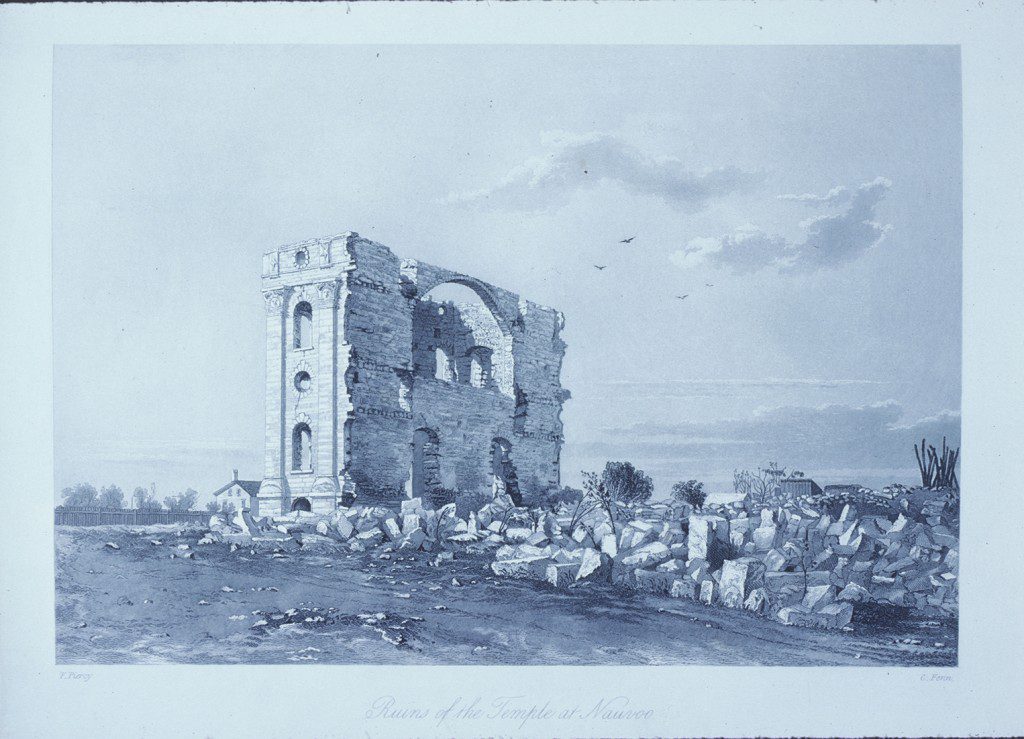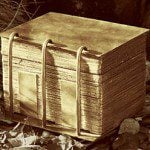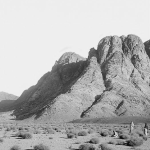
(Wikimedia Commons public domain image)
The Latter-day Saints had been driven from Nauvoo, Illinois, just six years before, after the murder of Joseph Smith by mob. In their heyday, Nauvoo had been roughly the same size as Chicago.
***
Here are links to a few articles in a previous volume of Interpreter: A Journal of Latter-day Saint Faith and Scholarship that you might have missed:
Daniel C. Peterson, “It Came from Beyond”
Abstract: The early Latter-day Saints viewed the Book of Mormon not only as a symbol of Joseph Smith’s prophetic calling but also as the most powerful evidence for that calling. However, perhaps because they were ardent believers in the Bible who had been formed in a distinctly Bible-drenched culture and perhaps also because many of them had come to the Book of Mormon relatively late in their lives, they tended to quote from the Nephite record only rarely. Surprisingly, this was the case even for Joseph Smith himself — which can be taken as a sign that he didn’t write the book.
Richard E. Bennett, “A Uni-Dimensional Picture of a Multi-Faceted Nauvoo Community”
Review of Benjamin E. Park, Kingdom of Nauvoo: The Rise and Fall of a Religious Empire on the American Frontier (New York City: Liveright Publishing, 2020). 336 pages. $28.95 (hardback).
Abstract: Benjamin Park recently wrote a substantive revisionist history of Nauvoo, Illinois, the one-time Church capital under the leadership of Joseph Smith, Jr. This article serves as a critical review of Park’s work. Congratulating the author for placing this well-known Latter-day Saint story within the larger Jacksonian American democratic context, as well as for utilizing a great many primary sources hardly used before, Richard Bennett in this critical review assesses both the strengths and the weaknesses of this important new book. While complimenting Park for his significant contributions on politics, women, and race in Nauvoo, Bennett nonetheless finds much to criticize in what he sees as a unidimensional, highly political study that disregards many previous studies of Nauvoo and fails to address many other critically important facets of the city’s life and history from its inception in 1839 until the Saints’ departure in 1846.
Kent P. Jackson, “Some Notes on Joseph Smith and Adam Clarke”
Abstract: Authors of two recent articles believe they have found evidence that Joseph Smith, in preparing his revision of the Bible, drew ideas from a contemporary Bible commentary by British scholar Adam Clarke. The evidence, however, does not bear out this claim. I believe that none of the examples they provide can be traced to Clarke’s commentary, and almost all of them can be explained easily by other means. The authors do not look at their examples within the broader context of the revisions Joseph Smith made to the Bible, and thus they misinterpret them. Some of the revisions they attribute to Clarke are ones that Joseph Smith had made repeatedly before he arrived at the passages where they believe he got ideas from Clarke. In addition, there is a mountain of material in Clarke that is not reflected in the Joseph Smith Translation, and there is a mountain of material in the Joseph Smith Translation that cannot be explained by reference to Clarke. The few overlaps that do exist are vague, superficial, and coincidental.
Abstract: In this article, Paul Hoskisson discusses the question of whether Janus parallelism, a sophisticated literary form found in the Hebrew Bible and elsewhere in manuscripts of the ancient Near East, might also be detected in the Book of Mormon. Because the Book of Mormon exists only in translation, answering this question is not a simple matter. Hoskisson makes the case that 1 Nephi 18:16 may provide the first plausible example of Janus parallelism in the Book of Mormon.
[Editor’s Note: Part of our book chapter reprint series, this article is reprinted here as a service to the LDS community. Original pagination and page numbers have necessarily changed, otherwise the reprint has the same content as the original.
See Paul Hoskisson, “Janus Parallelism: Speculation on a Possible Poetic Wordplay in the Book of Mormon,” in “To Seek the Law of the Lord”: Essays in Honor of John W. Welch, ed. Paul Y. Hoskisson and Daniel C. Peterson (Orem, UT: The Interpreter Foundation, 2017), 151–60. Further information at https://interpreterfoundation.org/books/to-seek-the-law-of-the-lord-essays-in-honor-of-john-w-welch-2/.]
Abstract: Omni greatly revered his ancestors and their personal accounts on the small plates of Nephi. A close examination of Omni’s brief autobiography (Omni 1:1–3) evidences borrowing from all four of his predecessors’ writings. Moreover, his self-description, “I of myself am a wicked man,” constitutes far more than a confession of religious dereliction. That self-assessment alludes to Nephi’s autobiographical wordplay on his name in terms “good” and “having been born of goodly parents” and his grandfather Enos’s similarly self-referential wordplay in describing his own father Jacob as a “just man.” Omni’s name most likely represents a hypocoristic form of a longer theophoric name, *ʾomnîyyāhû (from the root *ʾmn), meaning “Yahweh is [the object of] my faith” or “Yahweh is my guardian [or, nursing father],” but could also be heard or understood as a gentilic, “faithful one” or “trustworthy one.” These observations have implications for Omni’s stated defense of his people the Nephites (traditionally, the “good” or “fair ones”) against the Lamanites, those who had dwindled in “unbelief” (cf. Hebrew lōʾ-ʾēmun). In the end, Omni’s description of himself as “a wicked man” should be viewed in the context of his reverence for “goodly” and “just” ancestors and brought into balance with those sacred trusts in which he did prove faithful: preserving his people, his genealogy, and the small plates themselves.
Kent P. Jackson, “The Visions of Moses and Joseph Smith’s Bible Translation”
Abstract: This contribution focuses on the earliest and one of the most significant chapters of the Book of Moses: Moses 1, sometimes called the “Visions of Moses.” Kent Jackson summarizes the sources available relating to the production of this chapter, illuminating obscure corners of its often misunderstood background with his extensive knowledge of the history, manuscripts, and significance of the Joseph Smith Translation.
[Editor’s Note: Part of our book chapter reprint series, this article is reprinted here as a service to the LDS community. Original pagination and page numbers have necessarily changed, otherwise the reprint has the same content as the original.
See Kent P. Jackson, “The Visions of Moses and Joseph Smith’s Bible Translation,” in “To Seek the Law of the Lord”: Essays in Honor of John W. Welch, ed. Paul Y. Hoskisson and Daniel C. Peterson (Orem, UT: The Interpreter Foundation, 2017), 161–70. Further information at https://interpreterfoundation.org/books/to-seek-the-law-of-the-lord-essays-in-honor-of-john-w-welch-2/.]
Posted from Newport Beach, California












